Turn Your Crummiest Physician Referral Marketing Letters Into Powerful Patient Generators With These Tips
Turn Your Crummiest Physician Referral Marketing Letters Into Powerful Patient Generators With These Tips
Introduction

Many PT practitioners aren’t happy with the results they get from their referral letters. That’s why we get lots of site visitors looking for samples. But samples don’t explain what it actually takes to create a successful letter campaign. As a result, samples lead to more frustration, and people conclude that physician referral letters don’t work. But strategic letter campaigns do work!
That’s why we want to show you samples of crummy marketing letters to referring physicians and how to fix them. If that sounds worthwhile, grab a red Sharpie and get ready to become a master clinical copywriter. We think you’ll find the exercise worthwhile since physician marketing letters are one of the most effective ways to influence referral patterns. Hence, it’s well worth the effort.
To begin, let’s get on the same page regarding what physicians toss and what they read.
What Gets Tossed: Letters that appear to have no clinical relevance, bury key ideas, or come across as a self-serving sales pitch.
What Gets Read: Problem-solving information (about their problem, not yours). However, the information needs to be easy to scan and clinically relevant.
Like most busy people, one part of a physician’s brain constantly scans the environment for solutions to everyday problems. As a result, clinical problems are the key to getting attention. So if you can find a way to make your problem-solution instantly evident, your letters will get read. It’s that simple.
How Long Should A Letter To Physicians Be? The “Shorter is Better” Myth
A COMMON MISCONCEPTION is that anything more than one page will not get read. Really? Let’s examine the logic behind that.
Think about the length of your letter this way: When you receive information about a solution to a problem you’re experiencing, do you really judge it by its length? Have you ever received a marketing piece about a problem you want solved, and said, “Boy, I’ve been looking for a solution to that, and here it is, but the letter is more than one page, so forget it.” Of course not. That would be silly.
In fact, when you want a problem solved, having enough information is a prerequisite to taking action. As a result, an effective letter needs to be long enough to cover all the key “need to know” and “want to know” information.
However, you do need to make your key ideas shine through instantly. That’s because the typical physician will not labor to determine if your letter is worth reading. So instead of worrying about the length of the letter, worry about the formatting, logical argument, and the appeal of your message. To help you do that, try following the Results Formula explained later in this article.
To sum up our discussion of letter length, let’s restate the “keep it short or it won’t get read” philosophy: If key ideas are buried in your text, the reader will quickly give up. Therefore, you have an instant to start building a compelling problem-solving case, so make sure you use that moment well. To do that, follow a time-tested method – The Results Formula (described in a section below) – to help determine what to say and how to say it for optimal response rates.
What Should A Letter To Physicians Say and How Do You Say It Well?
What to say and how to say it well are two entirely different things. As far as what to say, we’ve already covered that. You need to talk about the problems your audience wants to solve.
When it comes to saying it well, it helps to break your message down into 3 elements. Together, they create The Results Formula.
The Results Formula: 3 Elements That Spur Physician Referrals and Build Brand Awareness
The Results Formula – 3 Elements
Element 1: Interrupt & Engage
Element 1: Interrupt & Engage.
Use powerful headlines and subject lines to expose the problem and give the promise of more clinical problem-solving information to come. Focusing on problematic headlines grabs attention. Every professional is interested in solving their problems, and the hint of a solution will engage them.
For example, good headlines suck the reader in. Think about how you read a newspaper or blog article. If you’ve read to this point, perhaps this article’s headline “How To Fix The 2 Crummiest Physical Therapy Marketing Letters We’ve Ever Seen” promised to help solve your marketing problem.
Next, in response to an engaging headline, the reader instinctively scans for additional clarifying information. It’s a cognitive reflex. When that happens, your letter needs to help physicians stay engaged by using simple formatting techniques. These include bold text, underlines, charts, graphs, pictures, call out boxes, etc. The right formatting makes it easy to assess the information and become engaged.
Once successfully engaged, the reader shifts from scanning to reading. That’s where Element 2, education takes over.
Element 2: Education
Focus your text on building a logical progression from problem-description to practical solution. Educate and emphasize key ideas Using illustrations, charts, graphs, and any other showable evidence to help the reader draw a conclusion about your solution option. For example, this chart compares the cost of a letter campaign to the average revenue expected from one new referral source. Does the visual help focus attention on the value of a successful physician letter campaign?
Strategic Campaign Results - Crummy Letters FIXED
Things to consider for educational text:
- Does your letter demonstrate special expertise?
- How does your information compare to your competitors’?
- Do you use headings, call-out boxes, bullets, and other formatting to help the reader get the logical flow just by scanning?
If your educational information builds enough credibility, your reader is now in a position to consider taking the next step in the Results Formula – the call to action.
Element 3: Offer and Call To Action
Give your readers a variety of ways to take the next step to learn more. Most physical therapy marketing letters to physicians end with, “Give us a call with any questions.” This kind of offer is self-evident and incomplete. Your offer should include more resources for learning about what you do and how you do it. Your offer should be separated from the body copy for easy, scannable reference.
Red Sharpie Time: See How We Apply The Results Formula To 2 Of The Crummiest Sample Marketing Letters To Referring Physicians We’ve Ever Seen
See the 2 Crummiest Letters Now and How We Rip Them Apart With The Results Formula To Score Their Power Level.
PT Referral Machine Newsletter Signup
Stay up to date on the latest trends in marketing for physical therapists – From The Trenches.


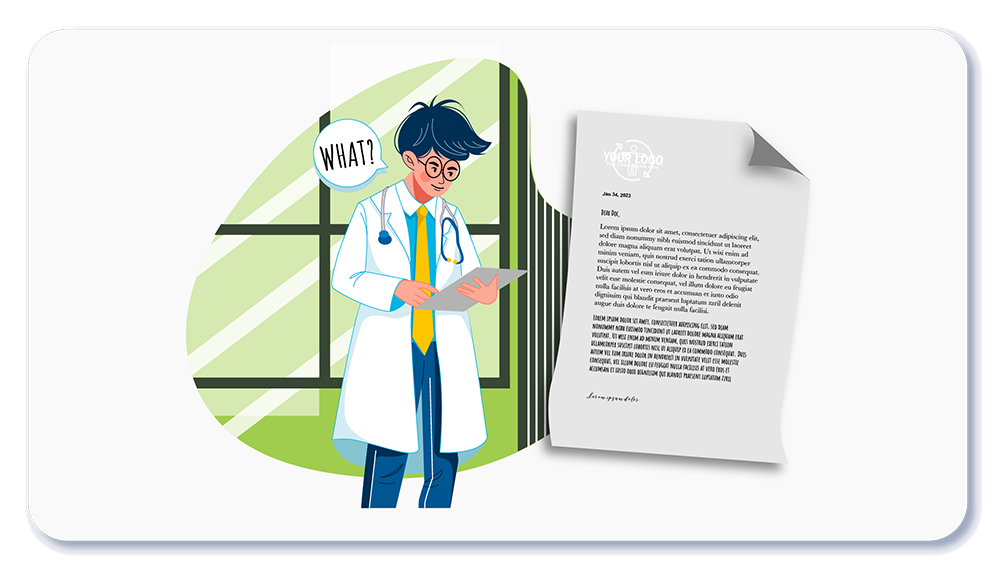
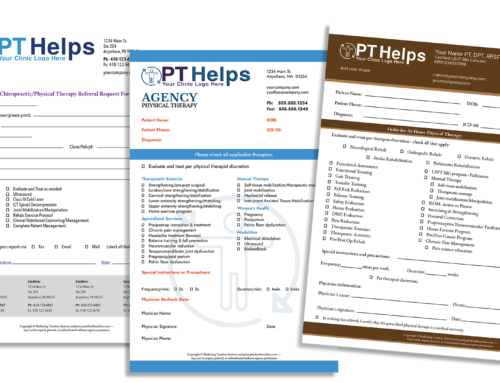
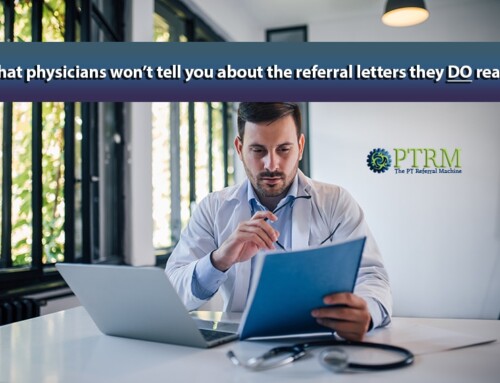

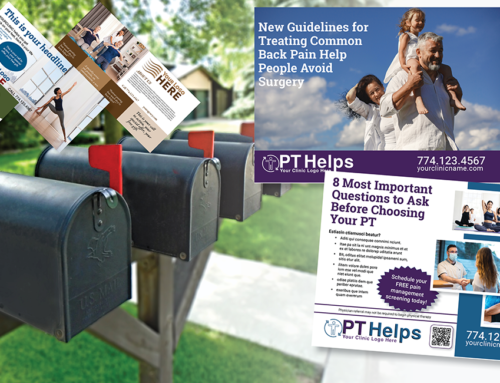
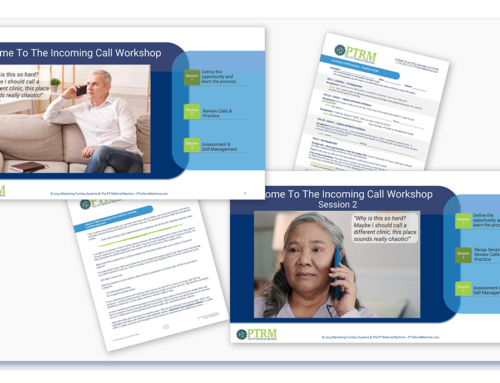

Leave A Comment
You must be logged in to post a comment.